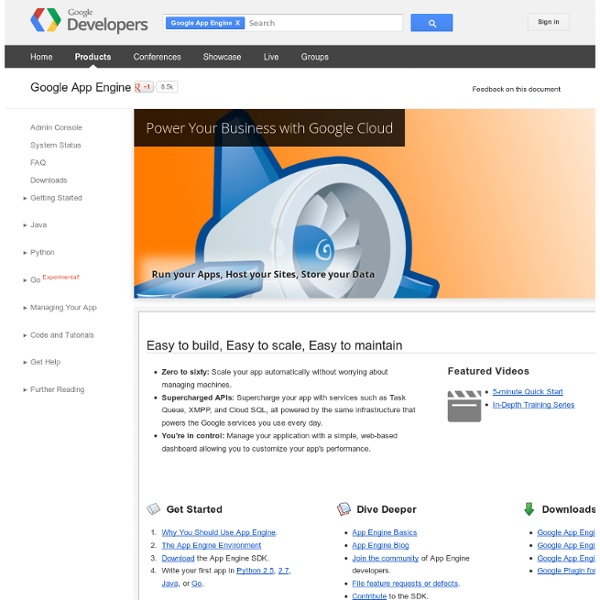



MindMup - online mindmaps Capture ideas at the speed of thought – using a mind map maker designed to help you focus on your ideas and remove all the distractions while mindmapping. Create unlimited mind maps for free, and store them in the cloud. Your mind maps are available everywhere, instantly, from any device. Brainstorm, create presentations and document outlines with mind maps, and publish your ideas online and to social networks. Get Started Why use MindMup? MindMup is great for individual note-taking, collaborative planning, teamwork and classrooms. 1 Powerful keyboard shortcuts speed up your work 2 Frictionless interface helps you focus 3 Convert maps easily to PDF, PowerPoint, outlines... 4 Publish and share maps online 5 Easily save to Google Drive and manage using Google Apps
Google App Engine Google App Engine is free up to a certain level of consumed resources. Fees are charged for additional storage, bandwidth, or instance hours required by the application.[3] It was first released as a preview version in April 2008, and came out of preview in September 2011. Supported features/restrictions[edit] Runtimes and framework[edit] Reliability and Support[edit] All billed High-Replication Datastore App Engine applications have a 99.95% uptime SLA.[15] App Engine is designed in such a way that it can sustain multiple datacenter outages without any downtime. Paid support from Google engineers is offered as part of Premier Accounts.[17] Free support is offered in the App Engine Groups and Stack Overflow, however assistance by a Google staff member is not guaranteed. Bulk downloading[edit] Restrictions[edit] Major differences[edit] Differences with other application hosting[edit] Differences between SQL and GQL[edit] Portability concerns[edit] Backends[edit] Google Cloud SQL[edit] See also[edit]